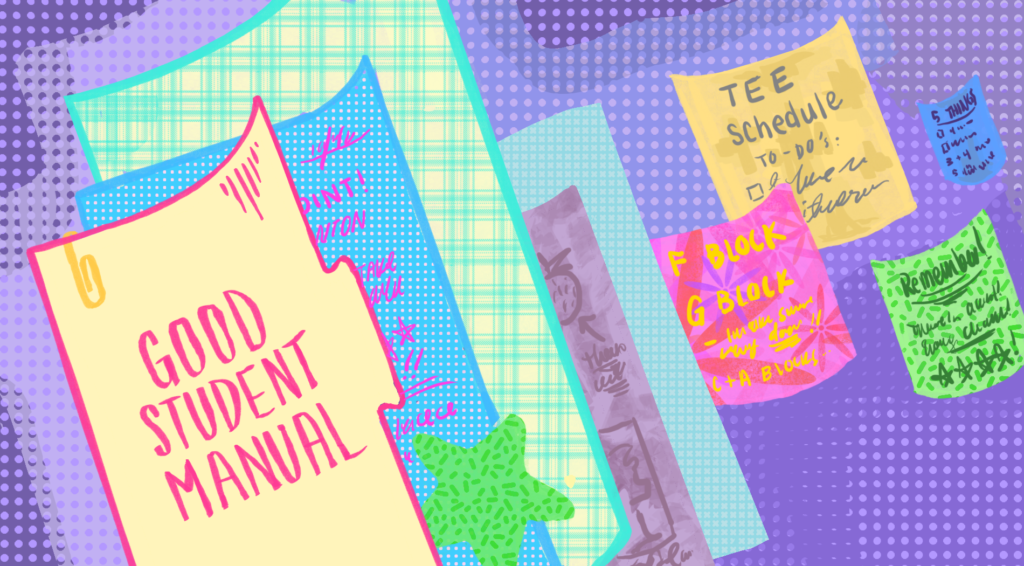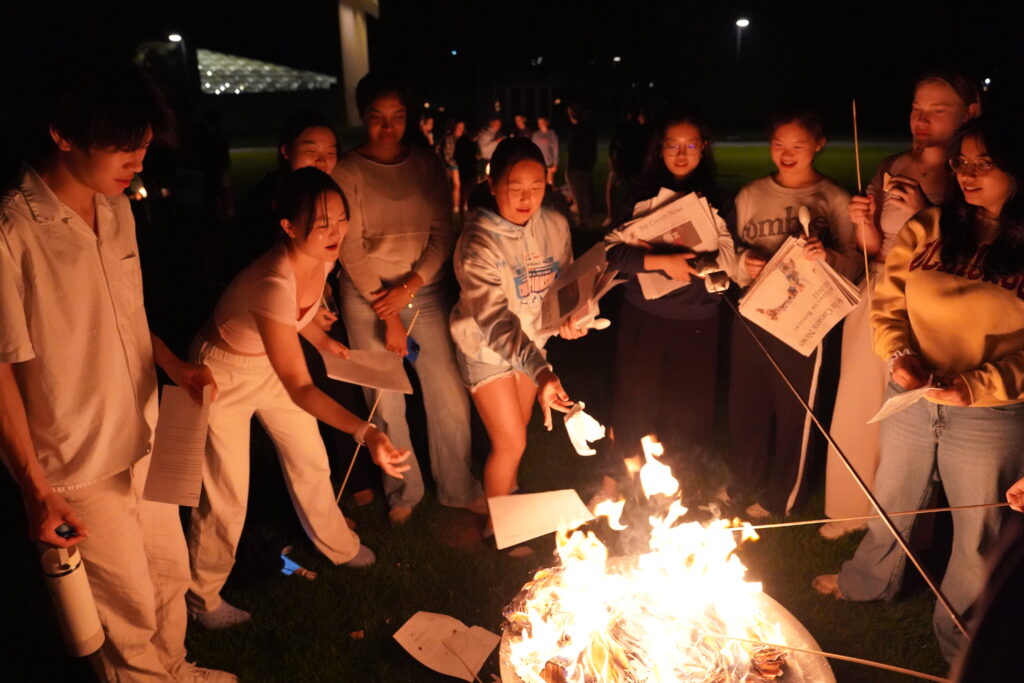
Graphic by Carolyn Chen ’25/The Choate News
On December 18, 2010, revolts across the Arab world spread like wildfire, spurring events that would fundamentally change the region. The Arab Spring, as these revolts came to be known as, was a series of protests aimed at increasing democratic freedom across the Arab region. Following these inspiring and revolutionary events in the early 2010s, Mr. Andy Arcand, an English and Humanities teacher, developed an idea to integrate social media into his classes. “Twitter and some other social media platforms were a big part of that [the Arab Spring], so I saw how social media could be incredibly empowering,” he said.
Twitter is an online news and micro-blogging site that allows its users to share short thoughts, known as Tweets, with the rest of the online community. As Mr. Arcand so humorously put it, “Even though I’m a VSCO girl at heart, I’m old. I only have Twitter and Facebook.” He believes that many different social media platforms can be used effectively in classrooms, but Twitter remains the most familiar and comfortable choice for him. In contrast to the platforms most beloved by Gen Z, Twitter has a reputation for users to engage in relatively more stimulating and thoughtful conversations, making it more suitable for classroom assignments and exchanges. Some examples of Mr. Arcand’s Twitter assignments are, “Tweet any article, artwork, or a video that you think is related to the story we’re reading in the class,” or, “Tweet an article that you found interesting.” Students can then use these Tweets as inspiration for their own creative works.
Mr. Arcand believes that using Twitter in the classroom could help his students in three ways: learn to write more concisely, compose engaging statements and questions, and develop a skill set to be used beyond school in both professional and personal settings. He stated that the 140-word limit placed on Tweets has been an incredibly useful and rewarding teaching tool. Not only does it automatically compel students to become more concise and straightforward in their writing, but it also helps them hone and refine the skills of formulating captivating hooks and engaging sentences to absorb a reader’s attention.
According to Emily Mito ’24, one of Mr. Arcand’s students and a first-time user of Twitter, this unique yet creative method has been incredibly effective in helping her improve her writing. Mito said, “I personally had never used Twitter before, so it felt a little uncomfortable until I got used to it. But, every time I do a Twitter assignment, it gives me a chance to enhance my writing in [a] way that is different from traditional writing assignments.” She feels that Twitter – more specifically, its equally exasperating and useful 140-word limit – has allowed her to communicate her ideas more effectively and creatively.
In correspondence to Twitter’s rather lighthearted, comical reputation, Mr. Arcand has also chosen not to view student Tweets as graded assessments but rather as fun, formative assignments. On the rare occasion that he does choose to grade them, he looks for the same things he does in all pieces of writing: Is it engaging? Is it informative? Is it thoughtful and well-composed?
Although Twitter is neither the most common nor favorable approach among teachers, Mr. Arcand believes that if technology and social media are here to stay, students should learn to use them in effective and healthy ways, especially since tech companies designing such platforms are more interested in generating revenue than establishing safe and healthy environments. He stated, “Technology, social media, and natural selection can make for a dangerous mix, so we should do our best to help each other figure out how to use social media to benefit our lives. Similar to literature and other arts, we can use these things to better understand other people’s experiences and ideas and to express our own.”
“One of the main takeaways is that I was able to face my writing in more casual and relaxed ways,” Mito said when asked about her biggest takeaways from “Tweeting” assignments. As a fan of this creative approach, she often finds herself “overthinking and struggling when staring at a Google doc to write an essay,” but this new platform reminds her that there are different ways to be creative in her writing. Another student Ivie Ojior ’24 agrees, saying, “My biggest takeaway is that there are so many different ways to learn in school and so many resources to take advantage of.”
Though a rather unconventional approach for a self-proclaimed “old” teacher, Mr. Arcand’s Twitter assignments have definitely become a highlight in his classrooms. The next time you stop by Humanities 212, lean in and see if you can hear a tweet tweet!




